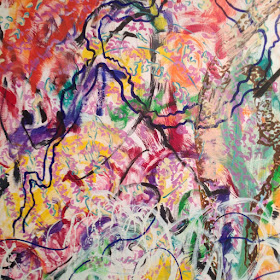Nancy Graves (December 23, 1939 – October 21, 1995) was an American sculptor, painter, printmaker, and sometime-filmmaker known for her focus on natural phenomena like camels or maps of the moon. Her works are included in many public collections, including those of the National Gallery of Art (Washington, D.C.), the Brooklyn Museum of Art, the Smithsonian American Art Museum, the National Gallery of Australia (Canberra), Walker Art Center (Minneapolis),and the Museum of Fine Arts (St. Petersburg).When Graves was just 29, she was given a solo exhibition at the Whitney Museum of American Art. At the time she was the youngest artist, and fifth woman to achieve this honor.A prolific artist who worked in painting, sculpture, printmaking and film, Graves first made her presence felt on the New York art scene in the late 1960s and 70's, with life-size sculptures of camels that seemed as accurate as a natural history display. Like-minded artists included Eva Hesse, Close, Bruce Nauman, Keith Sonnier, and Serra, to whom Graves was married from 1965 to 1970.Her work has strong ties to the Alexander Calder's stabiles and to the sculptures of David Smith, with their welded parts and found objects; she collected works by both artists.Her most famous sculpture, Camels, was first displayed in the Whitney Museum of American Art.
The
sculpture features three separate camels, each made of many materials,
among them burlap, wax, figerglass, and animal skin. Each camel is also
painted with acrylics and oil colors to appear realistic.
The camels are now stored in the National
Gallery of Canada, and two later "siblings" reside in the Ludwig Forum
für Internationale Kunst in Aachen, Germany. Working in Fiberglas,
latex, marble dust and other unorthodox materials, Graves later moved on
to camel skeletons and bones, which she dispersed about the floor or
hung from ceilings. In Variability of Similar Forms (1970), from
drawings that Graves made of Pleistocene camel skeletons, she sculpted
36 individual leg bones in various positions, each nearly the height of a
man, and arranged them upright in an irregular pattern on a wooden
base. In the early 1970s, she made five films. Two of them, Goulimine,
1970 and Izy Boukir, recorded the movement of camels in Morocco,
reflecting the influence of Eadweard Muybridge's motion-study
photography. In 1976, German art collector Peter Ludwig commissioned a
wax variation of a 1969 sculpture of camel bones.Graves began showing
open-form polychrome sculptures in 1980, one prime example being Trace, a
very large tree whose trunk was made from ribbons of bronze with
foliage of steel mesh. Also in the early 1980s, she began to produce the
works for which she became most widely known: the colorfully painted,
playfully disjunctive assemblages of found objects cast in bronze,
including plants, mechanical parts, tools, architectural elements, food
products and much more.Wikipedia













No comments:
Post a Comment